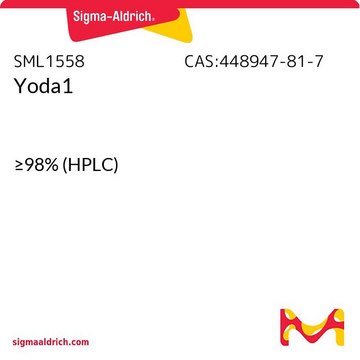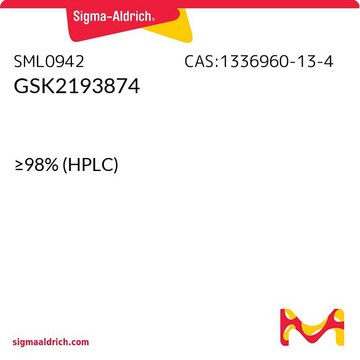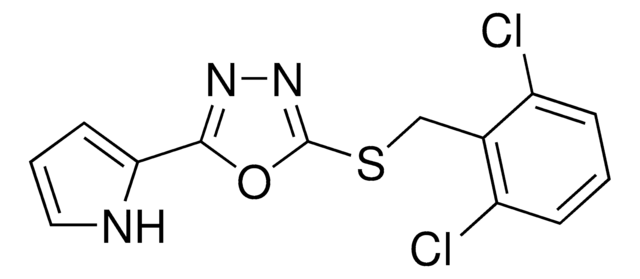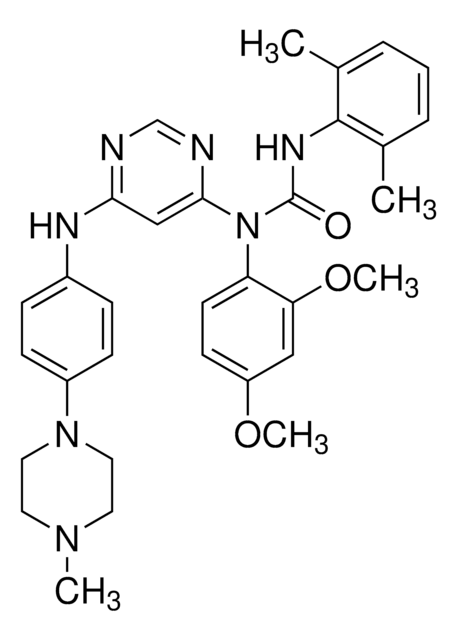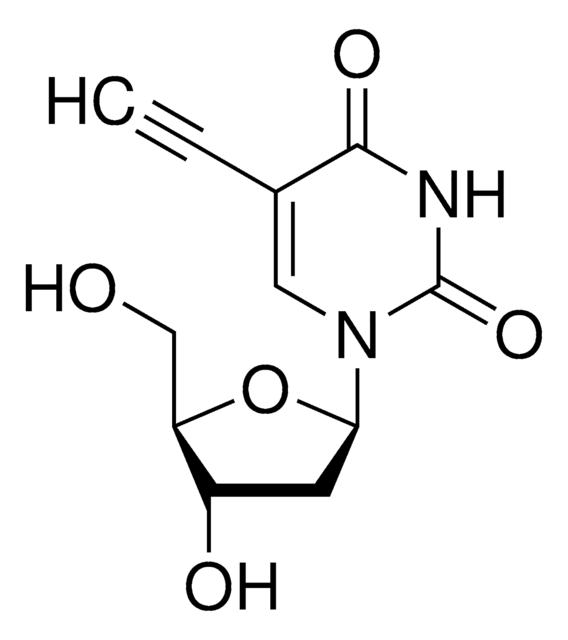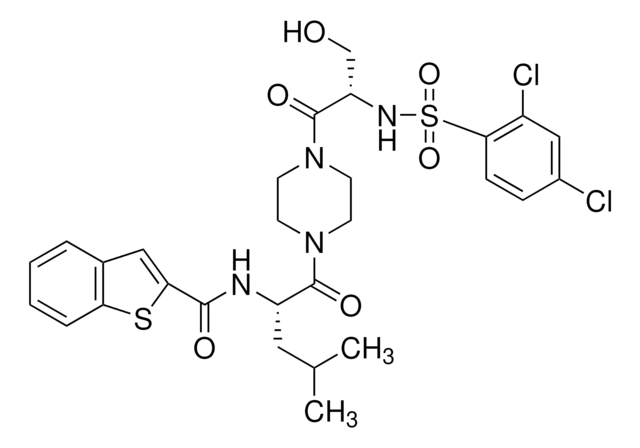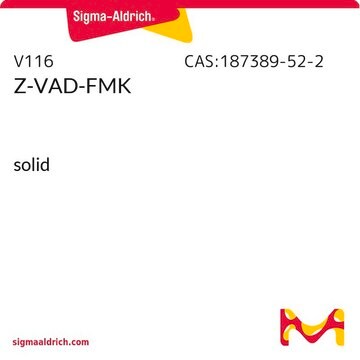SML3140
GsMTx4 trifluoroacetate
≥85% (HPLC), powder, TRPC1 and TRPC6 inhibitor
Synonym(e):
1-amino-Cy5-glucose, Cyanine-based 1-amino-1-deoxy-β-glucose conjugate, Cy5-linked 1amino-glucose, GCLEFWWKCNPNDDKCCRPKLKCSKLFKLCNFSF-NH2 trifluoroacetate(Disulfide: 2-17, 9-23, 16-30), Gly-Cys-Leu-Glu-Phe-Trp-Trp-Lys-Cys-Asn-Pro-Asn-Asp-Asp-Lys-Cys-Cys-Arg-Pro-Lys-Leu-Lys-Cys-Ser-Lys-Leu-Phe-Lys-Leu-Cys-Asn-Phe-Ser-Phe-NH2 trifluoroacetate (Disulfide: 2-17, 9-23, 16-30), Grammostola Mechanotoxin #4 trifluoroacetate, GsMTx-4 trifluoroacetate, L-GsMTx trifluoroacetate
About This Item
Empfohlene Produkte
Produktbezeichnung
GsMTx4 trifluoroacetate, ≥85% (HPLC)
Qualitätsniveau
Assay
≥85% (HPLC)
Form
powder
Farbe
white to beige
Lagertemp.
−20°C
Allgemeine Beschreibung
Anwendung
Biochem./physiol. Wirkung
Lagerklassenschlüssel
11 - Combustible Solids
WGK
WGK 3
Flammpunkt (°F)
Not applicable
Flammpunkt (°C)
Not applicable
Hier finden Sie alle aktuellen Versionen:
Analysenzertifikate (COA)
Leider sind derzeit keine COAs für dieses Produkt online verfügbar.
Wenn Sie Hilfe benötigen, wenden Sie sich bitte an Kundensupport
Besitzen Sie dieses Produkt bereits?
In der Dokumentenbibliothek finden Sie die Dokumentation zu den Produkten, die Sie kürzlich erworben haben.
Unser Team von Wissenschaftlern verfügt über Erfahrung in allen Forschungsbereichen einschließlich Life Science, Materialwissenschaften, chemischer Synthese, Chromatographie, Analytik und vielen mehr..
Setzen Sie sich mit dem technischen Dienst in Verbindung.